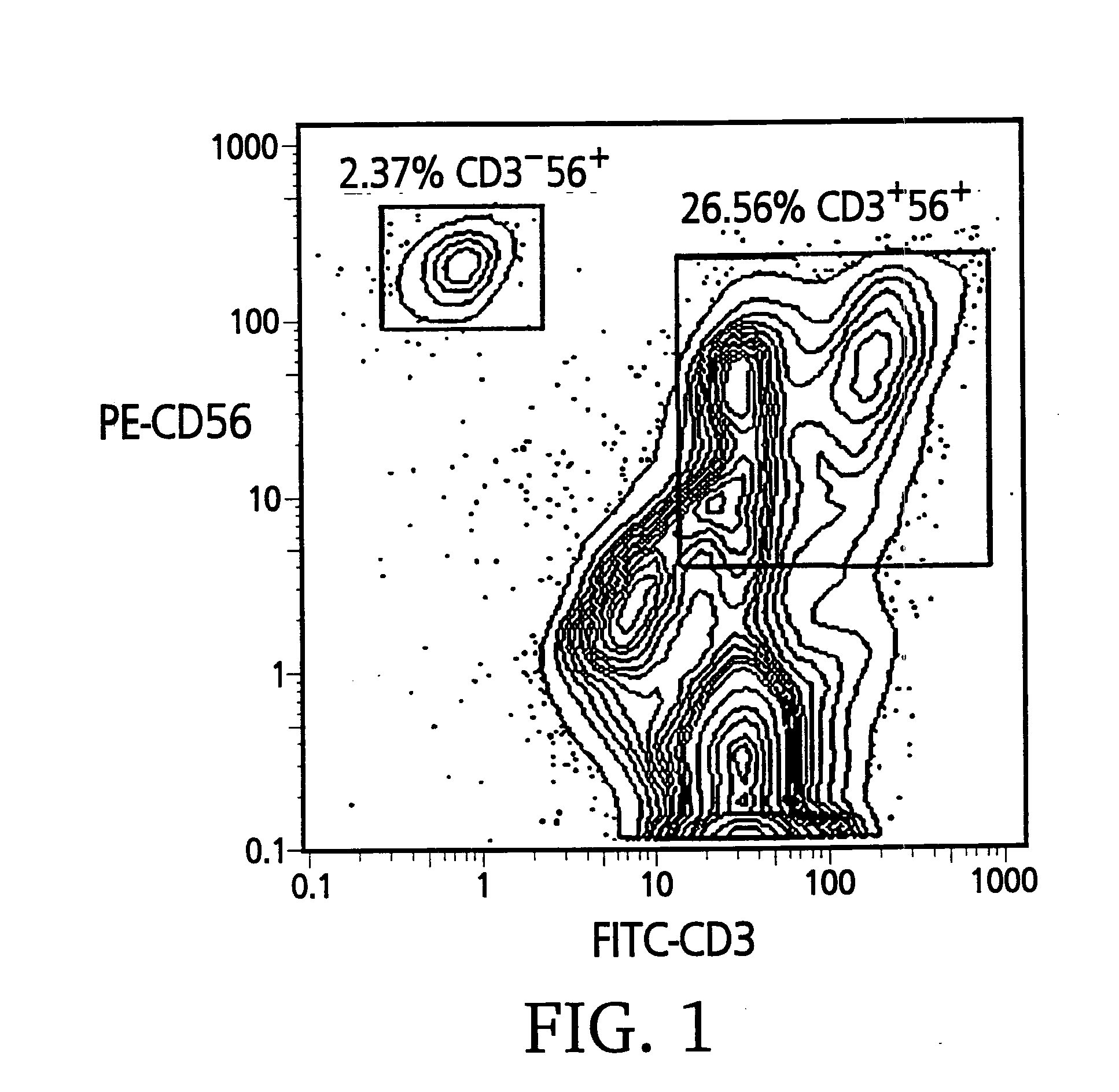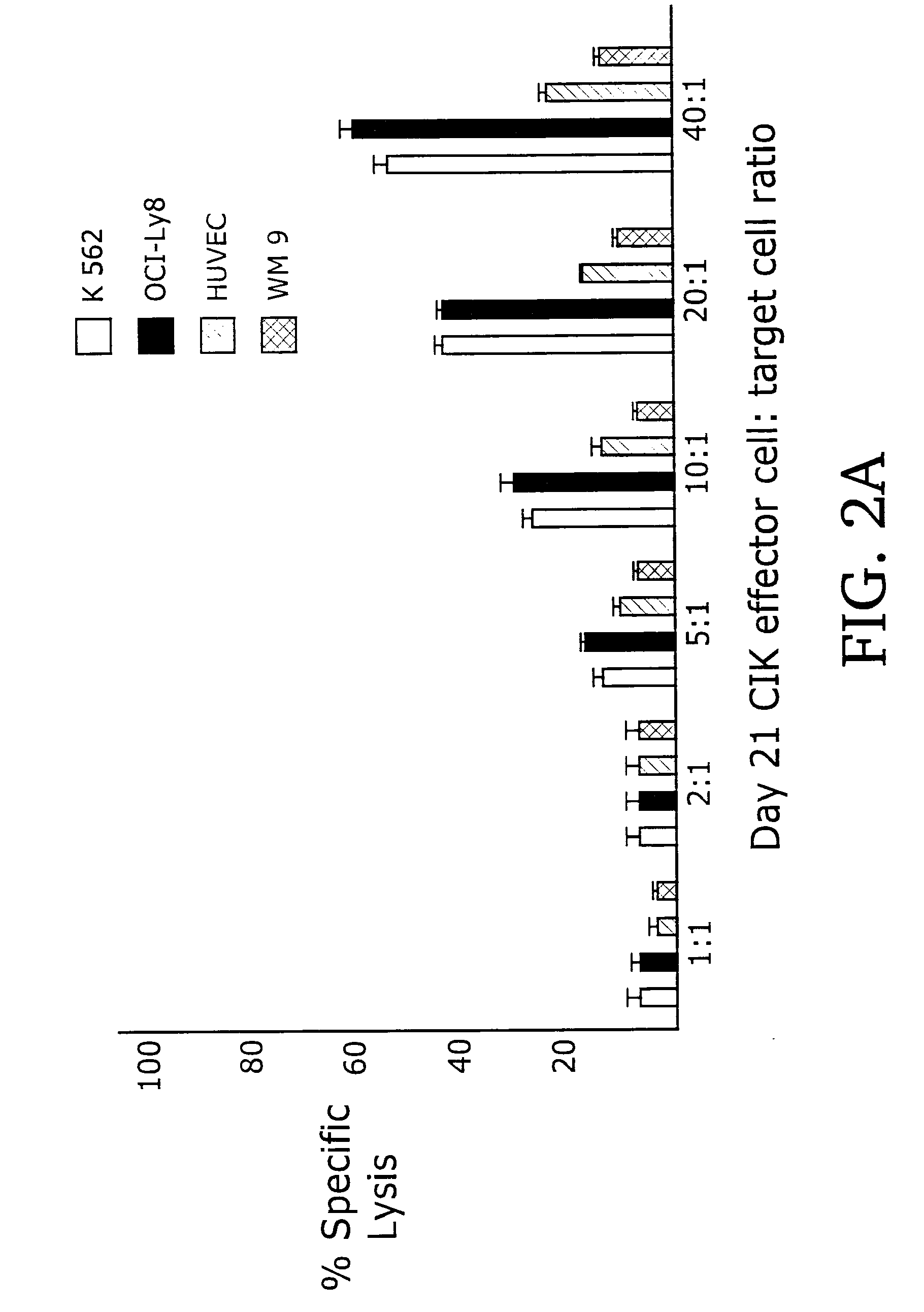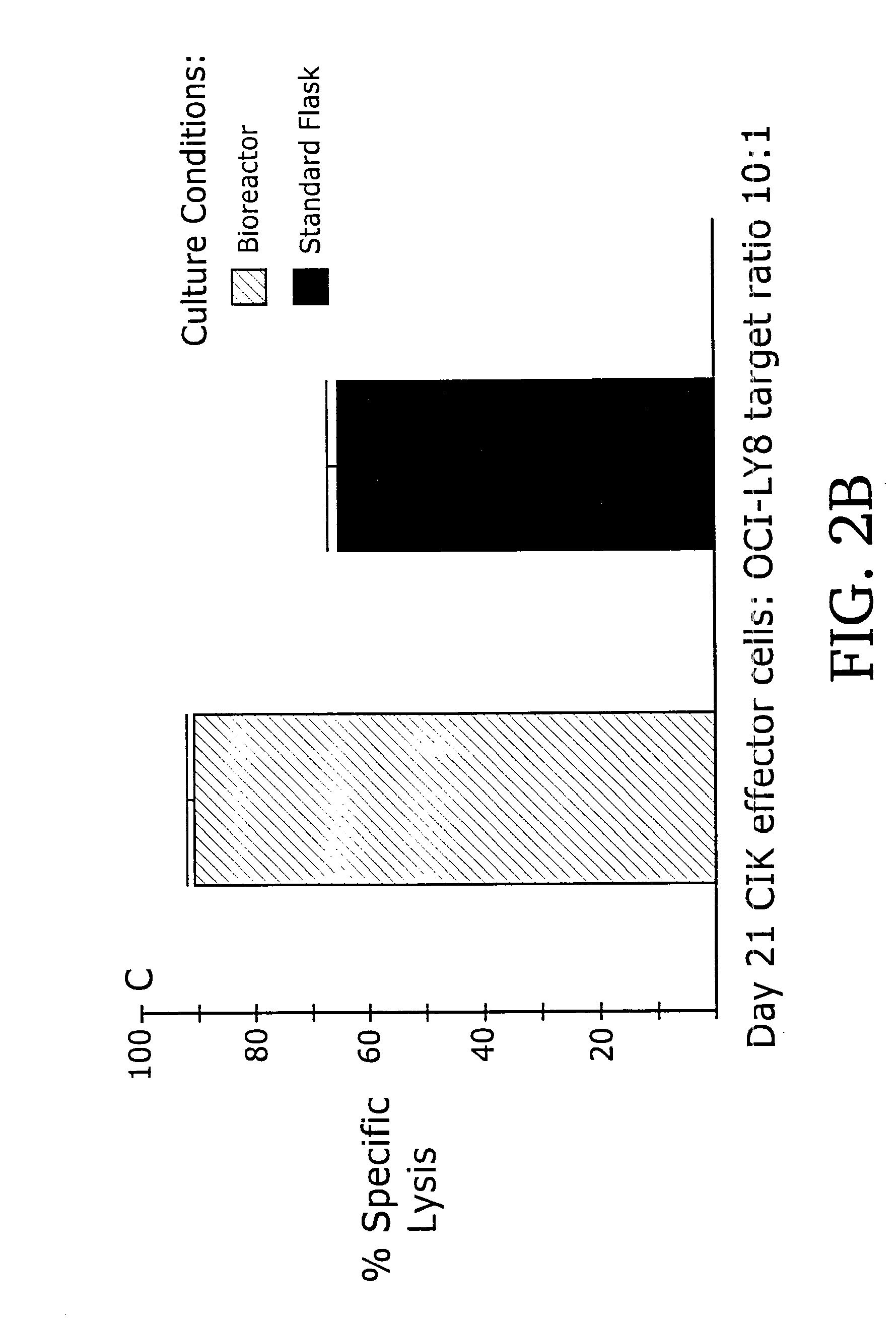Anti-angiogenic cellular agent for cancer therapy
a cancer therapy and cellular agent technology, applied in the field of antiangiogenic cellular agent for cancer therapy, can solve the problems of limited in vivo efficacy, large toxicities of il-2 administration, and massive endothelial destruction, and achieve the effect of minimal risk of vls associated with eat cell administration
- Summary
- Abstract
- Description
- Claims
- Application Information
AI Technical Summary
Benefits of technology
Problems solved by technology
Method used
Image
Examples
example 1
Generation and Maintenance of Cells and Cell Lines
(A) CIK Cells
[0081]Human CIK cells were prepared from peripheral blood lymphocytes (PBL) obtained from whole venous blood and buffy coats of healthy community donors (Stanford Blood Center, Stanford, Calif.). PBLs were isolated using Ficoll-Hypaque (Pharmacia Fine Chemicals, Uppsala, Sweden) density gradient centrifugation. PBLs isolated according to this method were resuspended at a density of 0.5-2×106 cells / ml in RPMI 1640 (GIBCO-BRL / Life Technologies, Grand Island, N.Y.) containing 50 μm β-mercapto-ethanol (ME), 100 IU penicillin-G / ml, 100 IU streptomycin / ml, and 10% fetal calf serum (FCS) (Sigma Chemical Co., St. Louis, Mo.). Subsequently, an enriched population of large granular lymphocytes (LGL) and T-cells was obtained by the exclusion of plastic and nylon wool adherent cells. The enriched population was cultured in a humidified incubator with 5% carbon dioxide at 37° C.
[0082]The enriched cell population was stimulated at day...
example 2
51Cr-Release Cytotoxicity Assays
[0087]Target cells used in cytotoxicity assays were metabolically labeled with 51Cr (DuPont-New England Nuclear, Boston, Mass.) by incubating 1×106 cells with 300 mCi 51Cr at 37° C. for 1-1.5 hours. Following the incubation, the cells were washed three times with phosphate buffered saline (PBS) containing 0.1% bovine serum albumin. The labeled target cells were then distributed in triplicate in flat-bottomed 96 well microtiter plates at a concentration of 2×104 cells / well. Effector (CIK) cells were added at the indicated ratios. Monoclonal antibodies were incubated with target cells for 15-30 minutes at room temperature prior to the addition of effector cells. The final volume of the assay mixture in each well was 0.2 ml. After 4 hours at 37° C., the cells were collected by centrifugation and an aliquot of the supernatant was counted in a gamma counter (Micromedic Systems, Horsham, Pa.). The percentage of specific 51Cr release was calculated according...
example 3
Ex Vivo Expansion and Cytotoxicity Profile of CIK Cells
[0089]Three to five percent of unmanipulated peripheral blood mononuclear cells (PBMC) present a CD3+56+ phenotype. Preferential expansion of CD3+56+ cells is observable as early as day 10 of culture (using the CIK cell culture conditions of Example 1), when of 12-15% of cells stain positive for the CD3+56+ phenotype. Day 14 to day 28 cultures typically yielded 30-50% of CD3+56+ cells.
[0090]Cell surface expression of CD3 and CD56 was analyzed for mature (day 21) CIK cells that were expanded ex vivo in bioreactors. Approximately 106 CIK cells were stained with anti-CD56-PE and anti-CD3-FITC monoclonal antibodies according to the manufacturer's recommendations and analyzed on a FACS-Star® (Beckton-Dickinson, San Jose, Calif.). The contour graph of a typical batch of CIK cells (FIG. 1) shows that 26.5% of the CIK cells are CD3+56+ and 2.3% are CD3−56+.
[0091]When used as effectors in 51Cr-release cytotoxicity assays, day 21 CIK cell...
PUM
| Property | Measurement | Unit |
|---|---|---|
| temperature | aaaaa | aaaaa |
| temperature | aaaaa | aaaaa |
| temperature | aaaaa | aaaaa |
Abstract
Description
Claims
Application Information
 Login to View More
Login to View More - R&D
- Intellectual Property
- Life Sciences
- Materials
- Tech Scout
- Unparalleled Data Quality
- Higher Quality Content
- 60% Fewer Hallucinations
Browse by: Latest US Patents, China's latest patents, Technical Efficacy Thesaurus, Application Domain, Technology Topic, Popular Technical Reports.
© 2025 PatSnap. All rights reserved.Legal|Privacy policy|Modern Slavery Act Transparency Statement|Sitemap|About US| Contact US: help@patsnap.com



